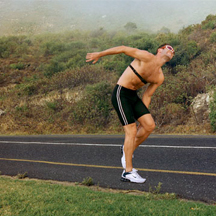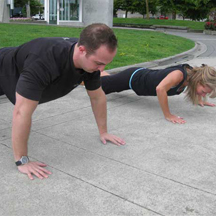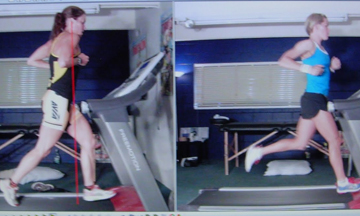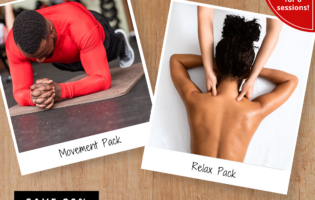Total Therapy Blog
Gearing Up for the Run… Injury Prevention
 Welcome to our fourth part of “Gearing Up for the Run”. We are excited for the upcoming Vancouver Sun Run and hope you are too! In the up-coming weeks, we will focus our energy on getting ready for the run. Last article, we talked about running longer and faster. This week, we’ll cover injury prevention while training for your run. If you have missed our previous 3 articles, you can find them here: Part 1, Part 2, Part 3.
Welcome to our fourth part of “Gearing Up for the Run”. We are excited for the upcoming Vancouver Sun Run and hope you are too! In the up-coming weeks, we will focus our energy on getting ready for the run. Last article, we talked about running longer and faster. This week, we’ll cover injury prevention while training for your run. If you have missed our previous 3 articles, you can find them here: Part 1, Part 2, Part 3.
These past few articles, we’ve focused on the basics of running, and suggested a couple approaches to preparing for a race. This week, we’re going to hone in on a very important aspect of training: injury prevention.
Running injuries are common – approximately 65% of runners experience an injury every year (runnersworld.com). These injuries can range from minor – sore knees – to major – hip stress fracture. Because of the nature of the sport, a large majority of these injuries are chronic – meaning that they happen over a long period of time due to the sub-maximal loads experienced during training.
Yup, training can do you in. So – how can you avoid becoming part of that 65%? We’ve already discussed one strategy (smart progression) with our “Training Principles – Progressive Overload for “New” Runners” article. There are two other ways you can avoid being bit by the injury bug: variety and technique.
Variety
Running involves repetitive motions (one foot in front of the other, thousands of times). Particularly if you have poor technique, doing the same motion over and over again can lead to muscle imbalances and excessive stress in a few select areas of the body. In short, you put yourself at risk of a repetitive strain injury.
One effective way of preventing this is to mix it up – or cross-train. The basic idea is that if you vary the stresses experienced by your body by changing the activity you’ll train different muscles and stress the bones in different ways.
 If you run as your main form of training, try a core class, swimming, cycling, or yoga as an alternate activity. This way, you can help avoid developing muscle imbalances while still working on your overall fitness. For more info, check out this video by the Globe and Mail on why crosstraining will make you a better runner: video
If you run as your main form of training, try a core class, swimming, cycling, or yoga as an alternate activity. This way, you can help avoid developing muscle imbalances while still working on your overall fitness. For more info, check out this video by the Globe and Mail on why crosstraining will make you a better runner: video
Technique
It’s not just how much you run, but how you run that impacts how injury-proof your routine will be. This brings us to the technique side of running. In general, think of technique as encompassing two areas: the actual running part, and what you do immediately before and after running
Before/After Running
Do a warm-up. There’s been a fair bit of controversy over the years as to whether or not warming up prior to activity actually prevents injury. Recent research (check out this 2011 study: http://www.ncbi.nlm.nih.gov/pubmed/21212307) suggests that there is some benefit to performing a simple set of pre- and post-workout exercises. For running, try the following:
- Dynamic stretch before the run:
- e.g. knee hikes, straight leg kick outs, butt kicks
- Replicate the movements of running (swinging the leg forward, sweeping it backward, kicking up at the end) to “ease” the body into the main event.
- Start at a slow jog:
- This is “dynamic warm-up, part II”. Think of it like you’re warming up a cold engine – you want to turn it over a few times before you head for the highway. Slowly starting your run lets your core temperature rise, the blood vessels to dilate and pump more blood to the muscles, and your tendons to become suppler. This makes it easier to move, and reduces your risk of injury.
 Static stretching after the run:
Static stretching after the run:
- e.g. quad stretch, hamstring stretch, calf stretch, glute stretch, groin stretch
- Static stretching is more effective when you’re warm, and it requires your body to relax into. Before a run, your body needs to be prepped up for movement, and relaxing is the opposite of that. Save the gentle, slow stretching for the end of the run.
During the Run
How you run is important. You don’t want to be mistaken for a T. Rex lurching down the street. Never mind what the neighbours think – your body isn’t designed to move that way! We already discussed the basics in our previous article (link to article here), but here are a few quick reminders:
- Land on your mid-foot, not the heels, and land with your feet under you
- Avoid excessive up-and-down movement (“bouncing”)
- Keep your shoulders relaxed and position your head in line with your shoulders
- Tilt your body forward slightly
- Engage your core and your glutes to keep your trunk stable
- Extend at the hip to lengthen your stride

If you’re not sure whether you have it right, have a friend watch you run and give you pointers. The other option is to have a health care professional – like a physiotherapist, kinesiologist, or chiropractor – film your running gait and analyze it with you. That way, you can see what you need to work on, and how you can avoid stressing your body.
While you’re out hitting the pavement, remember the 3 principles of running (variety, technique, and smart progression). That way, you can focus on your goal, instead of focusing on your rehab!
For our other parts:








Follow Us!
& Stay Up To Date
BLOG